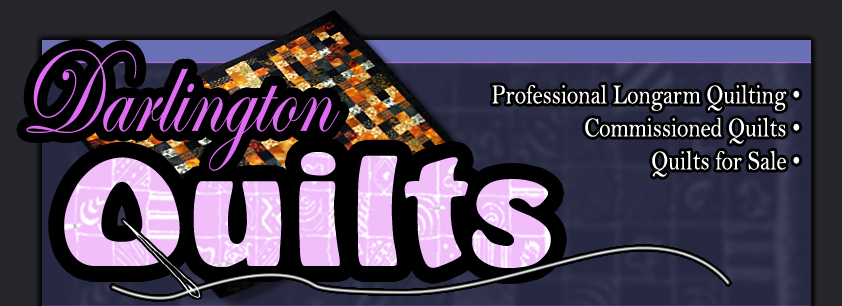| |
Quilt Preparation Guidelines
The better a quilt top is prepared before sending to a longarm quilter, the better the finished result will be. In order to guarantee the best possible product, please consider the following as you prepare your top for quilting.
- Be sure all stitches and seams are secure.
- Trim all loose threads. They can get caught in the quilting and may show through light fabrics.
- Please correct any wavy or ruffled borders.
- Your quilt should not be basted, pinned or tacked together. Remove any of this before bringing to me. If we have to remove it before quilting your top, there will be an additional charge.
- Make sure that the quilt top, the backing and the batting are all square and have straight edges, otherwise they will not mount properly on the rollers of the machine and may develop puckers or tucks because of uneven tension.
- The quilt top needs to be free of embellishments such as buttons, charms, pins, etc.
- Fullness and puckers pieced into the quilt top cannot necessarily be quilted out. We will do our best, but quilt tops with these problems may still have the problems once quilting is completed.
- Iron your top well, with all seams pressed either to one side or open. Iron the backing well too, with seams pressed open.
- If you have a pieced border or bias edges on the outside of your quilt, please stay-stitch ¼" in from the edge of the top to provide more stability. This will keep the seams from "popping" and prevent stretching when the top is mounted on the machine.
- Please indicate the top edge of the quilt top and also of the backing with a marked piece of paper, attached with a safety pin.
- Your choice of backing is very important. Patterned fabrics make more interesting quilt backs than solid fabrics and will help thread color changes blend into the fabric design.
- We prefer not to use bed sheets for the backing, as the higher thread count may cause skipped stitches.
- If backing is seamed, selvages need to be removed from the seams and the seams ironed open. The seams should run horizontal, not vertical. Vertical seams often cause pleating or tucks in the backing.
- You may provide your own quality batting. Off-brand or low quality batting cannot be used. We can provide a variety of Quilter's Dream batting at a reasonable price, if you wish.
- During the quilting process, the backing and batting may "shrink" or draw up, depending on the density of the quilting. Because of this, your backing should be at least 4" larger than the quilt top on all four sides. For example, if your quilt top measures 60" X 80", your backing needs to be at least 68" X 88". If you are providing your own batting, it should also be at least 4" larger on all four sides. Quilting charges are based on the size of your quilt top, prior to quilting, and not on the size of the backing or batting.
|
|
|










